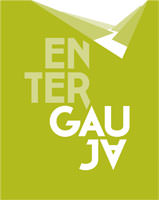
- Enter Gauja
- Things to do
- News & Events
- News
- Events
-
Latest events
31 Dec New Year's Eve at Mālpils Manor » 02 Jan Twilight Winter Walk in Cīrulīši »
- Eat & Drink
- Accommodation
- E-shop
Mushrooms are extraordinary organisms combining the features of plants and animals. Not for nothing they have their own fungi kingdom. Mushrooms vary very much in terms of colours and shapes, and therefore are interesting to watch. There is a huge biodiversity in Gauja National Park — dry and wet forests, forests of slopes, secular trees, old and decayed trees, deadwood, former manor parks, etc., which create a rich variety of mushroom habitats. During the respective time, the number of spotted species and shapes will be impressive! A well-prepared guide is needed to complete this “mission” with success.
|
Best time to go Mushrooms are spotted during the whole year (also in winter), but the best time is July–September demonstrating the largest variety of species. |
|
|
|
Route We recommend picking one or two of the listed places, and create your own sequence. All of the listed places cannot be visited within one day. |
|
|
Distance The routes are mainly short — within a range of few kilometres from the car parking lot or bus station / railway station. |
|
|
Duration Depending on the interests of participants, presence of mushrooms, presence of a guide (or without a guide), time spent in one place. Usually one up to several hours. |
|
|
Difficulty level Easy. |
|
|
Road pavement Mainly forest paths, unpaved roads, natural underwood. |
|
|
Way marking None on site, except for the section along the right bank of the River Amata where there are blazes (orange painted circles, red diamonds) on trees. |
|
|
Worth knowing! Suitable footwear, best — rubber boots, are needed. Be careful on the slopes during wet weather. Consider immunisation against ticks. The activity is at one’s own risk. Emergency services: 112. |
|
|
Recommendation! Mushrooms can be watched at any other place (in governmental or municipal forests), where various habitats interact with each other — dry and wet, forests of slopes, river valleys, banks of oxbow lakes, old timber, old trees. |
 |
1. Forests of Silciems (Map 1)1–1.5 —km range around the Silciems Railway Station is among the most popular place to go for mushroom picking in the Greater Riga Area. Here you might find edible mushrooms popular in Latvia — various species of chanterelles, russulas, king boletes and other boletes, woolly milkcaps, orange milkcaps, gypsy mushrooms, etc. Most interesting is the chestnut bolete (Gyroporus castaneus), lurid bolete (Boletus luridus), edible polypore — sheep polypore (Albatrellus ovinus; an edible mushroom popular in Scandinavia) and the coral mushroom (Ramaria aurea). Silciems is conveniently located on the Riga–Valka railway line. |
 |
2. Forests of Lielstraupe (Map 2)A large forest 1–2 km southward, south-westward of Lielstraupe, where the largest of cap mushrooms in Latvia can be found — parasol mushroom (Macrolepiota procera). It is edible uncooked, or fried like pork chop. Wide range of cap mushrooms, including edible mushrooms. The car can be parked in the centre of Lielstraupe. |
 |
3. Vicinity of Zvārte Rock (Map 3)Excellent landscapes and ideal places to pick mushrooms along the banks of Amata, heading along the nature trail from Zvārte Rock to Veclauču Bridge (~4 km). The medical mushroom chaga (Inonotus obliquus), as well as alder bracket (Inonotus radiatus) can be found here. The alder bracket has surface of changing colour depending on the viewpoint angle. Various mushrooms with a decaying effect are found on fallen trees. Park your car at the visitor centre of Zvārte Rock (charged during V–X). The left bank of the River Amata, in the section from Zvārte Rock to Veclauču Bridge is a part of Roči Forest Reserve, and entrance is prohibited! |
 |
4. Ungurmuiža Park (Map 4)Notable due to the old oaks. Interesting polypores are growing on the trunks of fallen oaks. One might be lucky and spot the bright-coloured polypore Hapalopilus croceus, as well as other mushrooms related to oaks in autumns. Park your car near Ungurmuiža Manor. |
 |
5. Vicinity of Lake Vaidavas (Map 5)Wooded area (within a range of ca. 1 km) eastward of Lake Vaidavas, and slopes of the lake shores. Here you might find the summer bolete. Park your car near in the parking lot near the swimming place of Lake Vaidavas. |